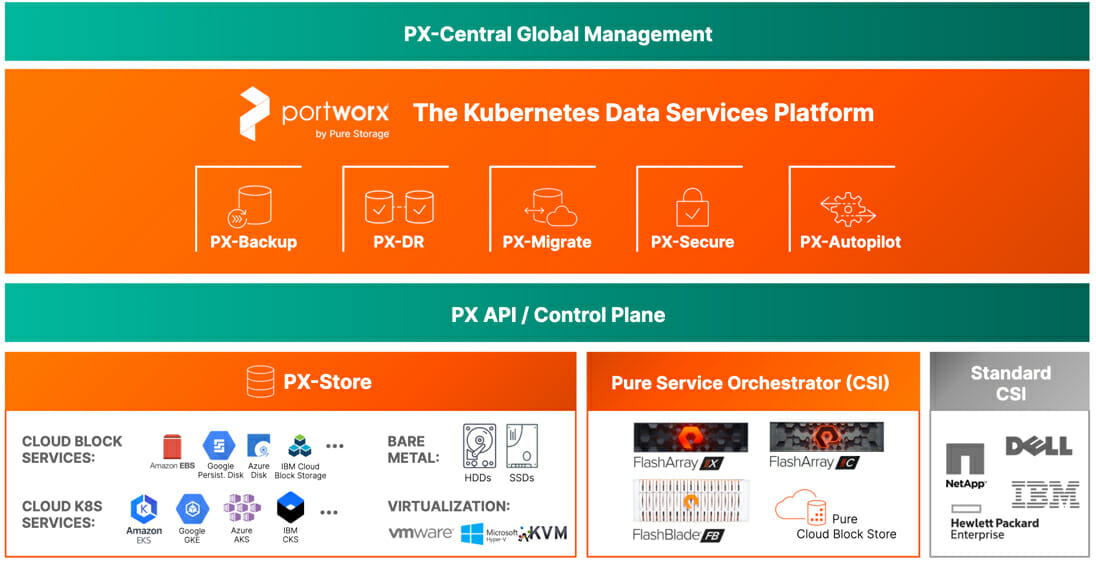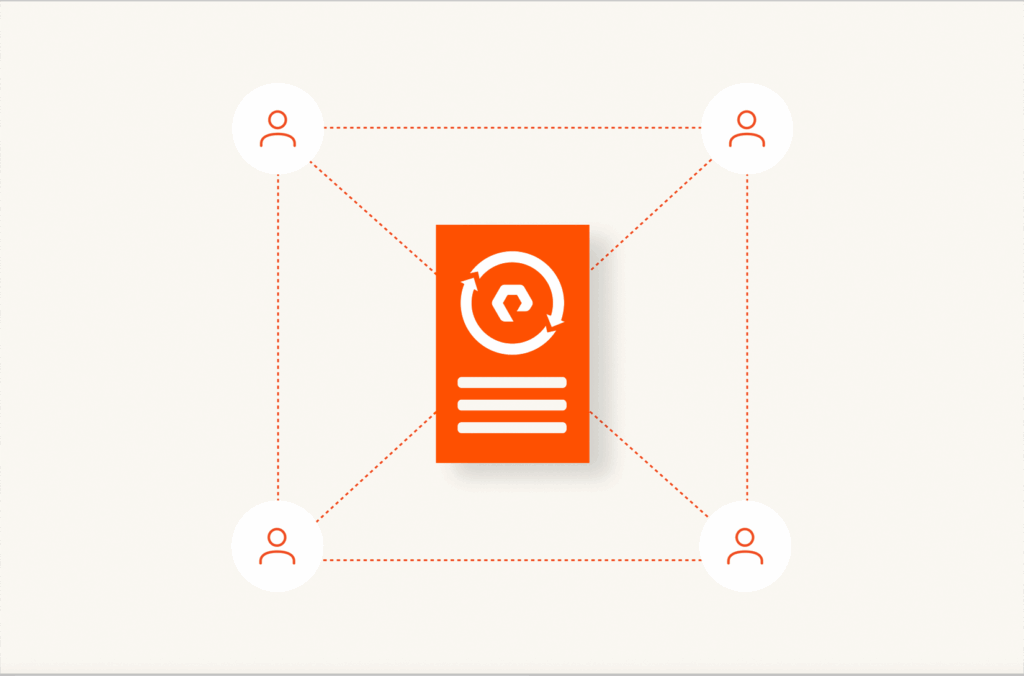The story of containers opens another chapter with Pure Storage’s acquisition of Portworx.
I suspect that some of the first questions that people will ask is: How can these two storage leaders combine and how will their products work together from the start of this new journey?
I want to give my thoughts on how Pure and Portworx—and our products—complement each other today, even before the inevitable future integration.
Pure Storage already provides industry-leading all-flash storage with a container integration solution through its Pure Service Orchestrator™ solution. This is currently constrained by the container storage interface (CSI) standard, which is still maturing and doesn’t provide production-ready features such as replication, backup and recovery, and migration.
Portworx currently provides a Kubernetes Data Services Platform that includes PX-DR, PX-Migrate, and PX-Backup.

Immediate Benefits from Pure + Portworx
Whilst there will be much deeper integration of both parties’ products and solutions, how can you leverage the best of both from Day 1?
Let’s consider presenting SAN-based volumes to the Kubernetes cluster nodes from a Pure Storage FlashArray™.
FlashArray provides all-flash storage backed by an enterprise-class array with six-nines reliability, data-at-rest encryption, and industry-leading data-reduction technology. No longer do the storage-bay count and server media capacity limit your persistent volume capacities.
If you use Portworx replicas to ensure data availability for application pods across nodes, then having all replicas provisioned from the same underlying FlashArray will multiply your standard data-reduction rate, for the application data, by the number of replicas for the persistent volume. In other words, you effectively gain free storage using Portworx replicas along with FlashArray.
Every node in your Kubernetes cluster can effectively become a storage node, not only dramatically increasing both the capacity available to your developers, but also allowing you to use smaller-footprint servers and thereby improving the cluster’s compute power. Imagine a bare-metal Kubernetes cluster that has no internal disk capacity, in which even the boot disks are SAN-based, and you are still using the Portworx SDS solutions.
Looking Toward the Future
Working together, we’ll forge deeper integrations across the Pure and Portworx product lines. First let’s do a bit of blue-sky thinking and imagine what might come in the future. Note these are not roadmap promises, just my thoughts on some possibilities.
- Support the ability to have dynamically provisioned persistent volumes automatically present through the Portworx control plane to FlashArray volumes and replace the Portworx replicas used today for data redundancy.
- Offload current PX-DR and PX-Backup capabilities from a software-defined level to leverage the asynchronous and synchronous replication capabilities of FlashArray.
- Leverage FlashArray snapshotting, cloning, and scheduling functionality to enhance existing PX snapshot and cloning capabilities.
- Allow PX-Backup to utilize FlashArray’s Purity CloudSnap™ technology and scheduling capabilities.
- Work in a true hybrid-cloud Kubernetes cluster, using on-premises FlashArrays along with Pure Cloud Block Storage™ in the cloud with Portworx’s management of cloud disks.
- Integrate Pure Service Orchestrator’s storage topology support to enable availability zone support and create actual disaster-tolerant persistent storage across multiple FlashArrays.
- Bring the control plane of PX-Central with the storage views provided by Pure’s open-source Pure Service Orchestrator Explorer.
It’s hard to imagine running out of ideas. PX-Migrate is impressive for moving data from one Kubernetes cluster to another when both clusters use Portworx-based storage. What if we could use it to migrate from one backend to another? And then…
You can try out the Portworx software suite even if you don’t have a Pure FlashArray today. Hop over to the Portworx website and download the free version or test a more feature-rich version on a 30-day trial.
Written By:






